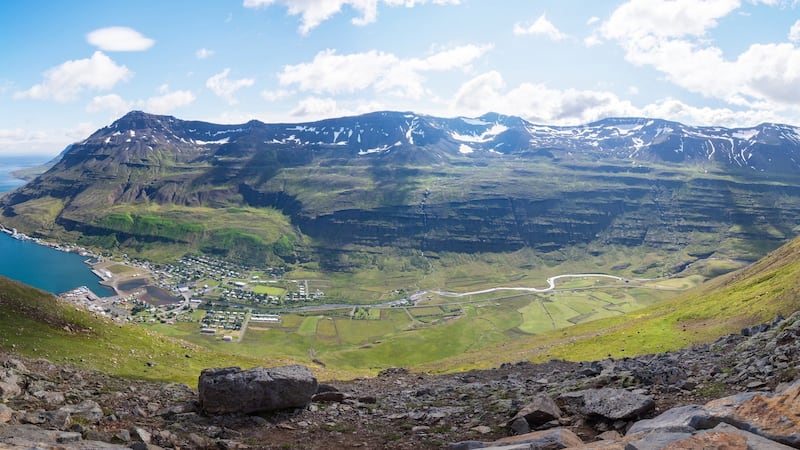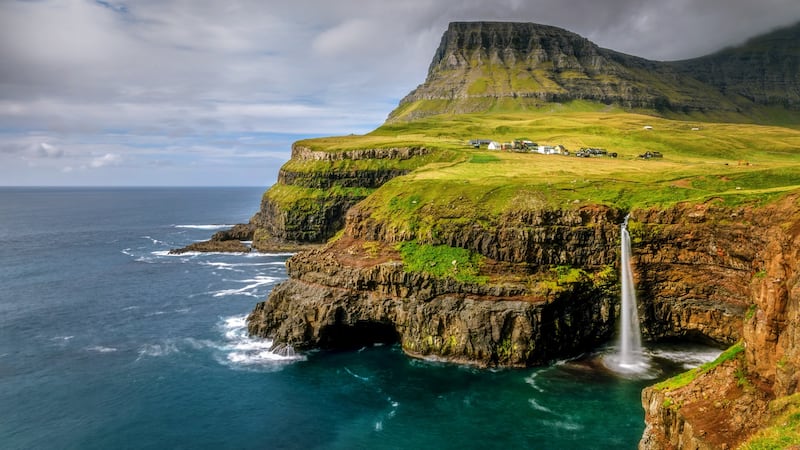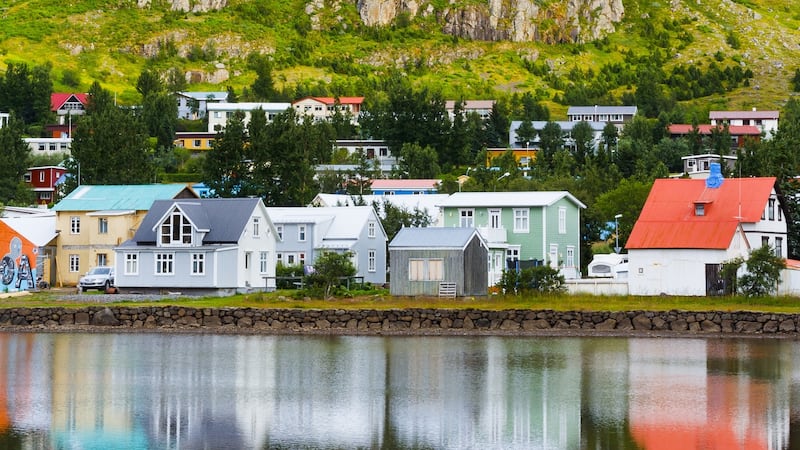Those who have visited Iceland before will need no convincing of its splendour. Its desolate beauty is the stuff of legend among those who return time and again for the strangeness of its landscape, for the joy of dipping in and out of hot springs and for the warmth of its deeply likeable locals.
Reykjavik remains the easiest to access and most popular destination for both the newly initiated and long-term members of Iceland’s fan club, and for good reason, too. The tiny city offers a Narnia-like introduction to the country and hosts many of the scenic anomalies we conjure up when we think about the land of fire and ice.
At Keflavik airport, black rock that summons moon landings greets those who have just arrived and serves as a primer for what's in store. From geothermally heated apartments and hotels spread across the city's harbour, intrepid tourists make plans to visit the Blue Lagoon and the Golden Circle.
Those staying in the capital can glide between cozy bars disguised as wooden shacks, imbibing the Icelanders’ much lauded chilled demeanour as well as their craft beer followed perhaps by a night at the Harpa, looking out at the bay that gives the city its name, surrounded by some of Reykjavik’s musical elite.
Spectacular entrance
But if that all sounds a bit too easy, then travelling to Iceland via the clandestine fjords of the island's east coast to the village of Seyðisfjörður, on a ship that set sail from northern Denmark, could well be the spectacular entrance you're holding out for.
Though lengthy and at times choppy, this trip via the North Sea through the sub-arctic Atlantic provides an unforgettable backdrop by which to mark your time, absorbing the journey in a manner closer to that of an explorer than a city-breaker, though with the added benefit of fresh linen and deck-top hot tubs.
Every year from April, when the seas have calmed, the Norrøna ferry sets sail once a week from the bustling port town of Hirtshals on the tip of the Danish province of Jutland and travels via the Faroe Islands to Iceland, carrying on board an equal mix of cargo, cars and giddy adventurers.
From here, those travelling for business and for leisure alike settle in, pull up a deck chair with a beverage in hand and cheer while this colossal ship pushes out from the harbour rendering all on board as seafaring folk with little else to do for the next three days but watch the world go by.
Onboard luxury
On board it is a tiered system of luxury. Down in steerage, in the bowels of the ship where the mechanics of the vessel clink and churn, are the couchettes. These dark and sparse abodes, far below the buzz of cocktail lounges and restaurants above, recall more punishing journeys across seas, but provide accessible options for those on a tight budget.
There on up, there are lovely, cozy cabins with or without sea views and most of the luxuries of home, if home came equipped with a storm rail. There are restaurants that range from buffet-style to fine dining, from Swedish meatballs to caviar in this case, but, most importantly, given the time spent traversing the waves, there is a bar and hot tubs on the top deck with panoramic views and Icelandic beer on tap.

If the sun gods shine as they did this time, then prepare to spend hours on Deck Eight, a hive of maritime activity, with a picnic and a book and slip into “ship time”, an inhouse timekeeping system that remains stable while we drift in and out of time zones. It is utterly practical and yet whimsical and disorientating enough to lend a dreamlike quality to the entire journey and so out there on the high seas, it’s ship time versus real time.
Shetland Islands
The further north you travel, the longer the evenings. On the first night the sun sets in a roaring red blaze over the coast of Norway, teasing out the last moments of gloaming to a near midnight finale. Overnight, the ship ghosts the Norwegian shoreline, moonlit and bouncing along until morning and the anticipation of the hazy outline of the Shetland Islands. The Shetlands, an archipelago of 100 islands, 16 of which are inhabited, arrive by mid-afternoon like a crescendo.
The diminutive grey mound spotted far off in the distance transforms into barren, searing cliffs, among them the highest in Britain, though so far north of that union that they’re almost equidistant between the Faroes and the Scottish mainland, and mark the division between the North Sea and the Atlantic.
Repeatedly flooded they host no trees and no shelter but for sporadic gatherings of Rowan and Crab Apple, their hardy native plants. Watching Jurassic islands drift by, visibly empty of people, heralds the beginning of a series of surreal encounters with land masses as odd as they are remote and beautiful, tethered out there in the sea and disappearing from sight as gently as they arrived. And then, of course, there are whales before teatime.
Pods of small orcas swim close to the ship and provide an ellipsis on the otherwise uniformly navy and glistening water as we power ever further northwards to the Faroe Islands.
The Faroe Islands
The Norrøna docks in Tórshavn on the Faroese island of Streymoy, renowned for its brightly painted timber homes with living grass roofs and indeed the spectacle does not disappoint. It is quaint and colourful among the muted colour palette of this part of the world, particularly among the moss green that defines the islands.

It seems a bit lazy to describe the Faroes as Lord of the Rings like but that's just what they are – luscious and empty and almost entirely bereft of people on many of the 18 major islands that make up this devolved Danish colony. It's the trip back in to the sea that most are here for, though, where the ship cuts through the cluster of fjords and mountains and cliffs where only hints of human life can be seen, like the arrival of a civic helicopter called Ruth shipping isolated locals around. The dramatic, primal, glacial landscape reveals itself over and over again until we exit back in to the Atlantic where the famous Mulafossur Waterfall at the edge of the world, is the last thing we see.
Majestic views
Most will be eagerly awaiting their arrival in Iceland at this stage. The further north travelled the more epic the view and so what awaits as one final coastline comes in to view can be nothing short of majestic. The village of Seyðisfjörður is situated at the bottom of a 17km long, snow-capped fjord almost directly opposite Reykjavik over on the west coast. With a population of about 700, the town is described by the poet Matthías Johannessen as like a “pearl in an enclosed shell”.

Waterfall after waterfall after waterfall greets the visitor as the snow melts and trips through ravines carved out in rock back down to the sea. Inhabited by Norwegian fishermen, once upon a time, who brought with them their own prefabricated homes and churches by ship, these colourful interlopers mingle with almost Brutalist municipal buildings, hospitals and swimming pools like film stills from Let the Right One In.
Now in the throes of a nightless summer this day that never ends will provide saunas, walks alongside crystal clear mountain streams, hikes around said waterfalls to sound sculptures that summon the Icelandic folk singing tradition and midnight games of soccer by teams of local school children.
It is an eerie end to an otherworldly trip in a town rightly famed for the eccentric people who settle there. It’s not the Iceland of Northern Lights and glaciers; it’s ensconced in a lingering dawn light that never fades, in an almost entirely still valley but for the out-of-earshot surge of 19 waterfalls warmed by a sun that never sets.
Norwegian Airlines flies to Aalborg via Copenhagen every Monday, Wednesday and Friday from €130.
Smyril Line operates the Norrøna ferry from the port of Hirtshals, 45mins north of Aalborg, every Tuesday and Saturday from July to September from €315.

















